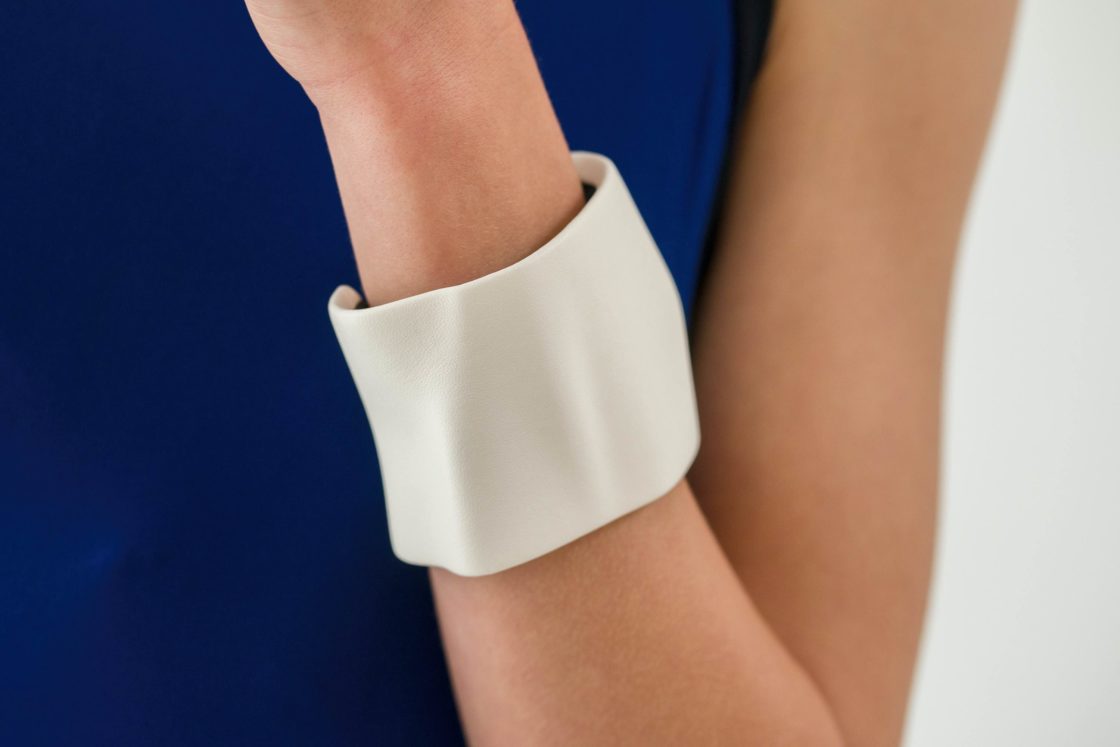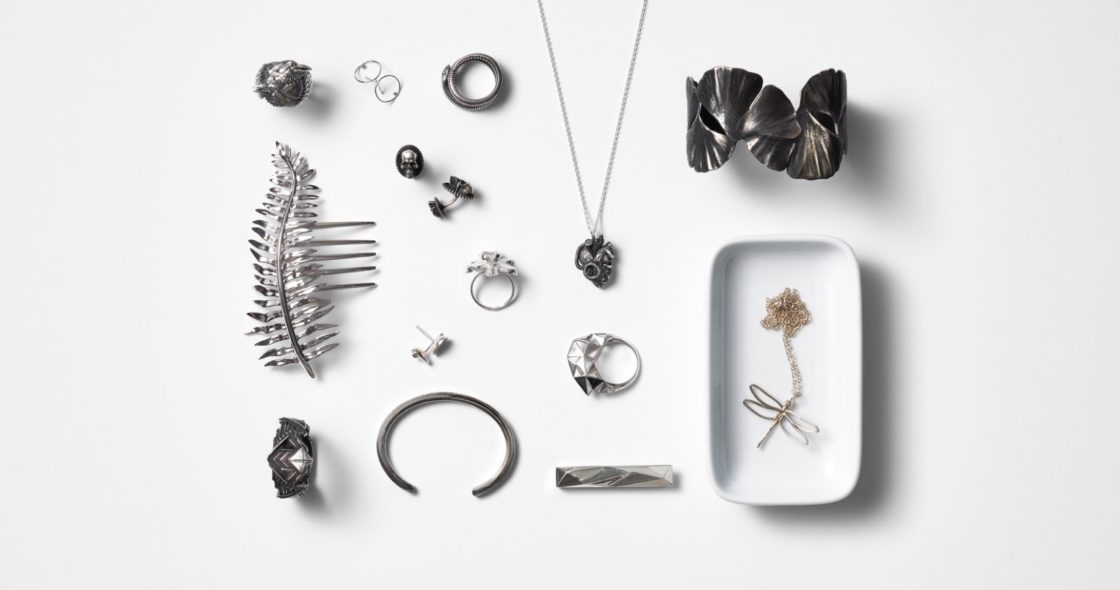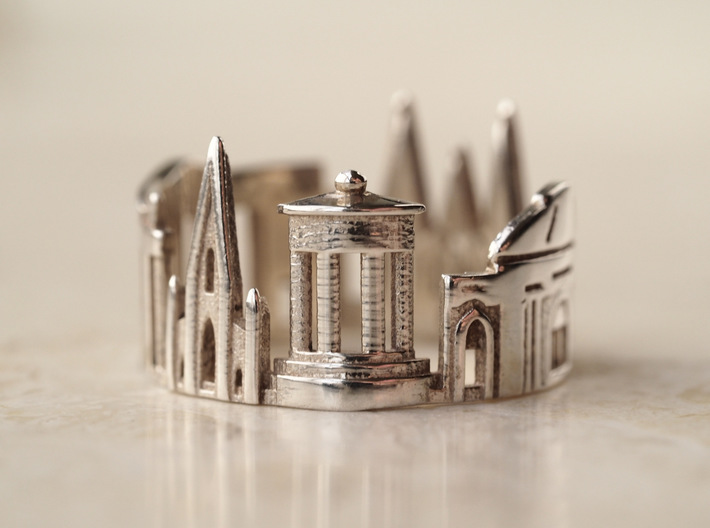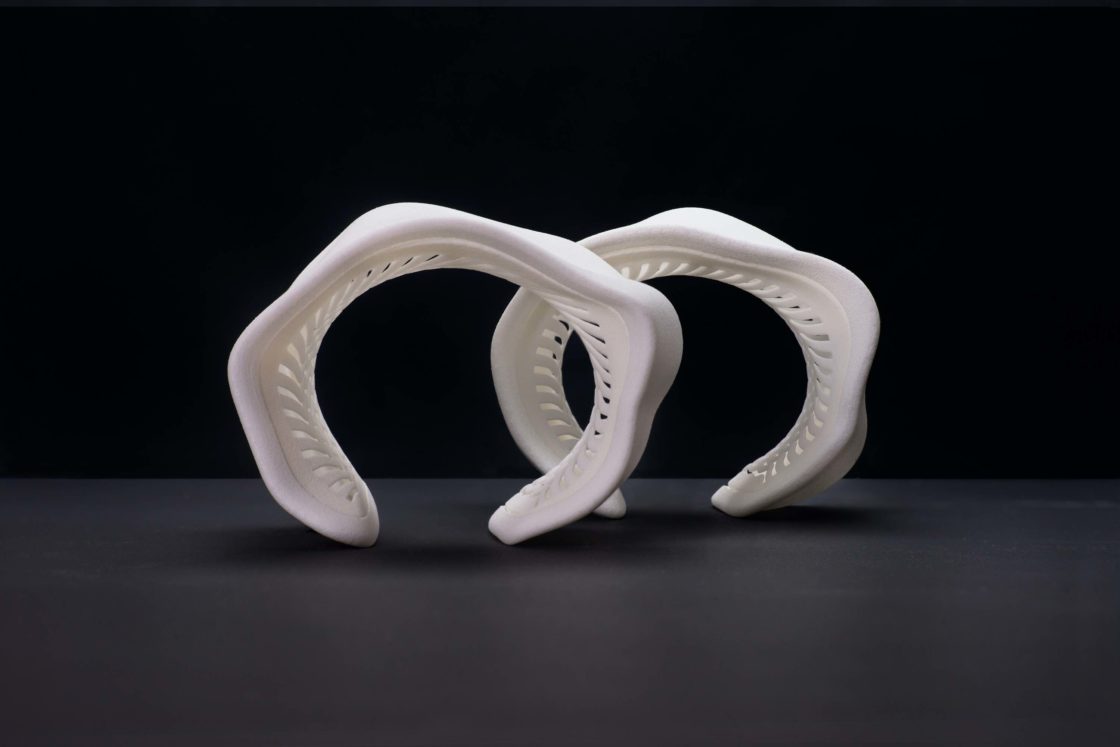
Trying to define the artistic spirit is a creative exercise on its own, delving into a universal human quality. Since ancient times, artists have been drawn to making jewelry and taking risks in terms of presenting individual expression that is often meant for their own wear or to adorn the bodies of others—and sometimes sparking an enviable and successful trend—no matter the century. Some designers seek out fame and fortune with success in jewelry, while others like to keep production levels select, and low key.
Jewelers have been experimenting with materials since ancient times
Since the beginning of time, finding new and inspiring materials has been key to making jewelry, beginning with ancient bling such as shells and beads made from natural items and other accessories featuring animal parts like hooves, antlers, teeth and bones. Undoubtedly, time travelers going in either direction would have a lot to learn from each other—whether in demonstrating how to make rough-hewn designs of yesteryear or sharing the spectacular magic of a technology capable of creating an incredibly intricate object, layer by layer, from a computer file (where to start?).
Progress in materials science allows for infinite choices in design
As materials science has evolved, the choices open to designers have changed drastically. One thing remains the same though: the continued role of jewelry in nearly every culture. Without a doubt, many emotions are connected to items like rings, for example. The engagement ring—worn on the left hand—was originally thought by the Romans to connect directly to the heart. It was inevitable that many 3D designers would decide to marry, bearing 3D printed wedding rings, sharing their stories with us, and undeniably raising the bar in terms of the lengths they went to in designing jewelry and proposing.
It is the rare individual who doesn’t enjoy jewelry in some shape or form, or in giving a pair of earrings, a necklace, or a charm as a gift. Feelings usually do play a huge part in the process as designers are inspired to make something like necklaces or bracelets and then keep them for themselves—or bestow them on others as gifts—to be treasured for decades.
Shapeways offers a wide variety of materials and finishes

When it comes to choosing materials, jewelry makers must be discerning in terms of what will work best for their designs in terms of strength, flexibility, durability, and finish. Currently, Shapeways offers the following materials for jewelry designers:
- Nylon 12 [Versatile Plastic] – a strong yet flexible material, Nylon 12 [Versatile Plastic] is used for a wide range of industrial projects. 3D printed with selective laser sintering (SLS) technology, this material is available with natural matte and polished finishes, as well as a special premium finish for a high-end look and feel.
- Bronze – a copper-tin alloy made up of 10% tin and 90% copper, this material is often used for jewelry with a vintage appearance, featuring a deep red color, marbling, and silver highlights. Bronze jewelry at Shapeways is made through wax casting, and is suitable for bracelets, earrings, and cufflinks—all available in natural matte or polished finishes.
- Brass – An alloy made up of 15% zinc, 5% tin and 80% copper, brass is popular for jewelry designs like pendants and tie bars requiring intricate detail in manufacturing. Made through wax casting, brass jewelry from Shapeways is professional looking and available with a natural matte finish or a shiny polish.
- Gold – As another premium metal from Shapeways, both 14-carat and 18-carat gold are available in yellow, white, and rose. Produced via wax casting, intricate designs can be made with gold from Shapeways, featuring a professional look and finish for bracelets, tie bars, and earrings.
- Platinum – one of the highest quality materials available, platinum is a white metal used for high-end men and women’s jewelry like cufflinks, tie bars, rings, bracelets, and necklace pendants. While this is a more expensive material, platinum results in highly detailed, professional looking jewelry made from wax casting.
- Silver – a high-quality alloy used to make cufflinks, tie bars, rings, bracelets, and pendants, silver tends to be more malleable—as well as highly popular in the jewelry industry. Used with wax casting, Shapeways offers silver jewelry with the following finishes: natural, polished, fine-detail polished, and antique (often used for the steampunk look).
On-demand 3D printing and huge opportunities for customization benefit jewelers
With so many different types of materials and 3D printing technology to choose from, designers experience vast opportunity for customization. With on-demand printing, small volumes can be made from a 3D file—and in many cases, jewelers can design one-of-a-kind personalized pieces. Jewelry plays a variety of cultural roles too, from class rings, and wedding rings, to many different types of items that are handed down through generations all over the world.
Designers enjoy great access to technical support and customer service
Once you upload your model to Shapeways—and in fact, upload up to 20 models at once if you wish—you can look forward to a quick analysis of your design for printability and material options. If you would like the option to speak to a 3D printing expert to discuss scaling your jewelry business with additive manufacturing services from Shapeways, you can contact the team by filling out the form here.
The ability to receive instant quotes for 3D printing at Shapeways is a huge bonus—especially for new businesses keeping a close eye on where their money is going. For incredibly innovative designers like Sascha at Kova by Sascha, the ability to upload and receive quotes online was not only super efficient but also eye-opening. In comparing manufacturing expenses, the New York designer discovered that working with Shapeways through the Long Island City, NY factory was less expensive than having her work produced in China.
“Working directly with a 3D printing factory like Shapeways allows us to have peace of mind, there’s no stressing over the moving parts of traditional production,” explained Sascha further.
Technology like SLS 3D printing means unprecedented freedom in design
Sacha decided to start designing decorative crowns after a venture out into the alternative world of the Burning Man experience. She continues to make headpieces for enthusiastic festival-goers, but also for brides and other stylish 3D printing fans. Also using Nylon 12 [Versatile Plastic], Sascha enjoys the spectacular design freedom afforded by SLS technology.
Without the need for supports, jewelry designers (and so many others engaged in industrial 3D printing) are able to make complex geometries perhaps not ever possible before at all, and especially not with conventional technology. This is due to the powder-based technology of SLS, and its greatest benefit in no requirements for supports. The added powder surrounding the part during printing acts as an indirect support mechanism that is wiped away easily after printing—leaving a stable part that does not require post-processing, or present the potential for damage during removal of supports.
Explore prototyping opportunities too
Materials like Fine Detail Plastic are also available through Shapeways for jewelry prototyping, used with material jetting. With the ability to create detailed prototypes, designers across the board are able to evaluate jewelry and other parts before investing in final production. Changes can be made as quickly as it takes to edit a 3D file, offering another type of freedom as designers and engineers are not forced to wait long periods of time before putting their hands on a new iteration or new generation of a product.
3D designers use Shapeways for their jewelry business
Wearable Cityscape owner enjoys a great life thanks to 3D design

Manufacturing from Shapeways, and integration with e-commerce sites like Shopify and Etsy, have made life pretty darned grand for jewelry makers like Ola Shekhtman, owner of Wearable Cityscapes.
Favoring materials like polished silver, gold, and platinum, Shekhtman is able to travel the world making her 3D designs inspired after cities. She has sold over 6,000 of her various rings and is also able to enjoy her free time while Shapeways takes care of the manufacturing details:
“…To make 1000 rings by hand I would spend nearly 100 years. Shapeways can produce this amount in 2-3 weeks,” said Shekhtman. “Using 3D modeling I can make a city once and it is available to order in any quantity, forever, which frees me up for new designs.”
“It is my first passive income. All I need to do is upload models, photos of real products from different views, and detailed descriptions to help potential customers make a purchase.”
Investing in a 3D printer, along with accompanying software, a variety materials, and any required ventilation systems can be extremely expensive. While many designers today do design from the desktop (and often for prototyping), working with an experienced manufacturing partner can be extremely satisfying. The designer is freed up to do what they do best, while Shapeways continues on in printing over 20 million parts for over one million customers worldwide.
The digital age has brought incredibly positive change to the world. 3D designers like Ola Shekhtman exemplify what it is like to be free to live overseas, free to create popular rings with 3D software, and free in terms of time as Shapeways handles production.
Like Shekhtman, growing numbers of businesses rely on Shapeways to manufacture large numbers of 3D printed parts, varying in technology and materials depending on the project. Many designers have already been working with Shapeways for years, and over time have evolved in growth with the company—honing design skills and knowledge of production, as well as experimenting with a wide variety of different types of materials, finishes, and detailed structures.
Dutch designers 3D print bracelets, each as unique as a fingerprint

In 3D printing the Creatures bracelet series Dutch designers Groen & Boothman decided on selective laser sintering (SLS) technology with Nylon 12 [Versatile Plastic]. Their wish was to stay far away from the concept of disposable jewelry, instead making high-end products with strength and durability to stand the test of time. The work of the Dutch designing duo is particularly interesting too as they have woven in a handcrafted element with their 3D printed cuff bracelets, accenting them with beautiful leather on the interior, along with a gold-plated stud bearing the design firm’s logo.
The designers are also extremely happy about access to materials and technology that allow them to customize products intensely. Each of their bracelets are “as unique as a fingerprint.” Eschewing any type of mass production, Groen & Boothman use their artistic and industrial design skills to bring both elegance and emotion to their designs.
While Groen & Boothman have had good communication with Shapeways for years, they point out that one of the greatest benefits in working together is the ability to be designing at any time of day or night, and enjoy the ability to upload models quickly.
Learn more about building your 3D printed jewelry business
Jewelry makers are inspired by nature, other people, fashion, and often compelled to express their own emotions in design, but the discovery of new mediums and powerful tools like 3D printing can be the catalyst for blowing the lid off traditional techniques and elevating artistic expression and satisfaction like never before.
Shapeways makes world-class 3D printing more accessible to everyone through automation, innovation and digitization. Our purpose-built software, wide selection of materials and technologies, and global supply chain lower manufacturing barriers and speed delivery of quality products. Shapeways offers over 10 different technologies for manufacturing, and 90 different materials and finishes. Find out more about powering your own jewelry business through Shapeways here.



